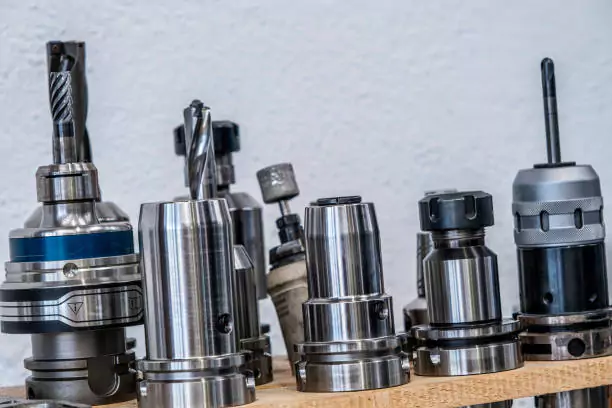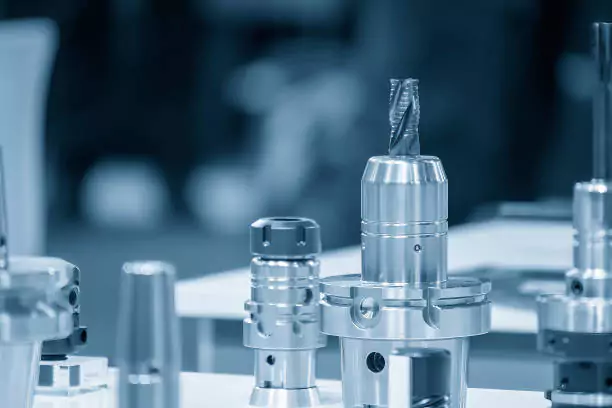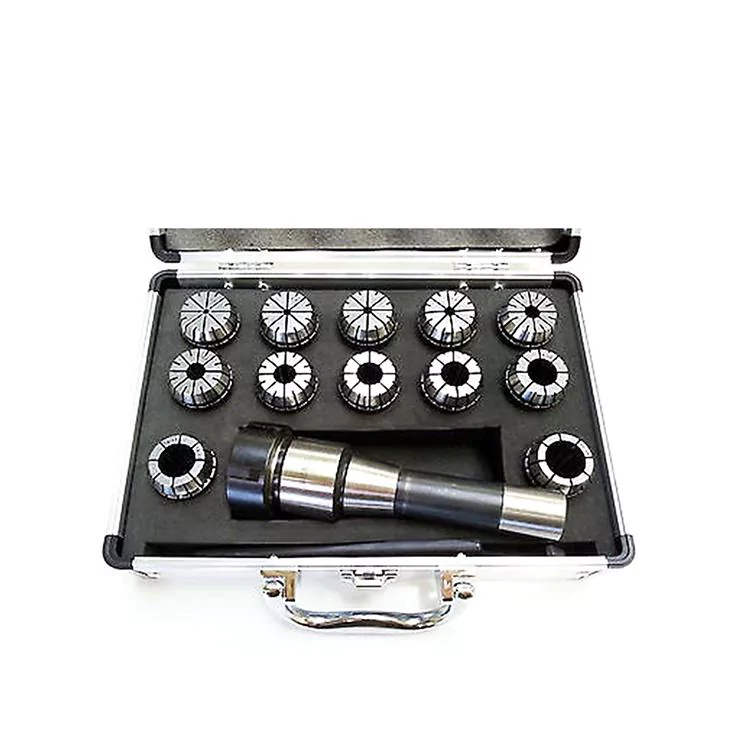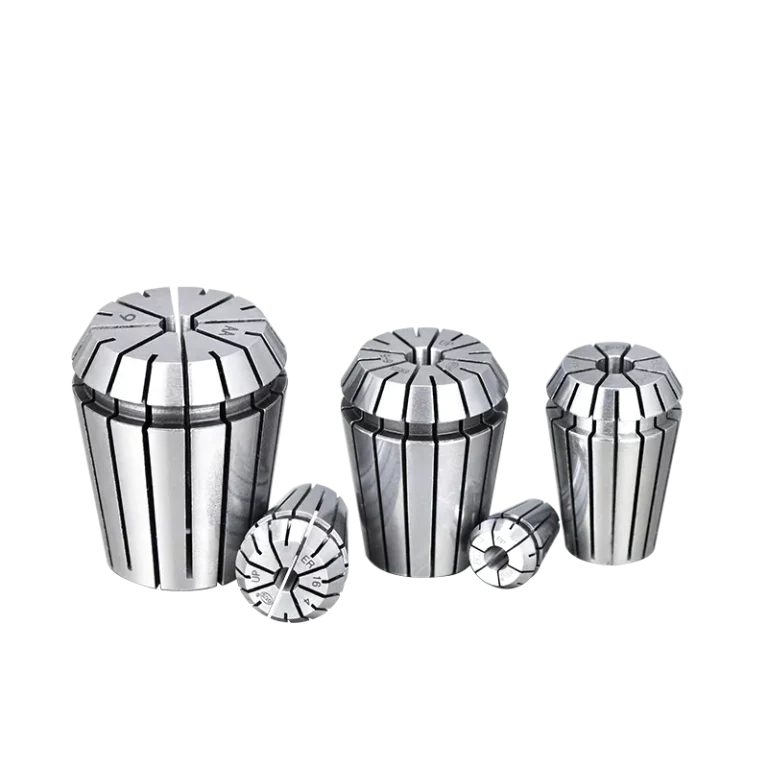Introduction to Tool Holders
Definition and Importance
Tool holders are essential components in the machining world, connecting the machine tool to the tooling. They play a critical role in ensuring precision, stability, and efficiency during machining operations. These components are engineered to hold various cutting tools, such as drills, mills, and taps, securely in place, minimizing vibration and improving overall tool life. The importance of tool holders cannot be overstated—they impact both the quality of the final product and the efficiency of the manufacturing process.
Connecting Machine Tool to Tooling
The primary function of a tool holder is to connect the machine tool to the cutting tool securely. This connection must be strong and precise to ensure that the tooling can withstand the forces during cutting and provide accurate results. Proper tool holder selection can greatly affect the rigidity and performance of the entire machining set-up.
Mounting Styles and Interfaces
Tool holders come in various mounting styles and interfaces to fit the specific requirements of different machines and applications. These include different taper designs, collet systems, and flange types that allow for quick and precise tool changes. The right interface ensures compatibility between the tool holder and the machine spindle, facilitating efficient operation.
Overview of Tool Holder Components

Understanding the essential components of tool holders helps in selecting the right tool for the task at hand. Tool holders typically consist of several parts, each designed to serve a specific purpose.
Taper
The taper is one of the most crucial components of a tool holder, responsible for aligning and securing the tool within the spindle. A well-designed taper ensures optimal contact and stability, which is vital for precision machining.
Flange
The flange provides additional support and stability to the tool holder. It helps to ensure that the tool holder is securely clamped within the spindle and can handle the forces generated during machining processes. The flange design also aids in the rapid changing of tools, enhancing productivity.
Collet Pocket
The collet pocket holds the collet in place within the tool holder. This component is essential for operations that require high precision, as it ensures the tool is centered and held firmly. The design and quality of the collet pocket can significantly influence the overall performance and accuracy of the tool holder.
Types of Tool Holders
Machine Arbors
Function and Mechanism
Machine arbors are used to mount rotating tools such as saw blades and milling cutters onto machine tools. They function by securely holding the tool in place, allowing it to rotate accurately and efficiently during operations. These arbors are typically designed to manage high load and torque conditions.
Applications
Machine arbors are widely used in various machining processes, including milling, drilling, and sawing. Their robust design makes them suitable for heavy-duty applications where precision and reliability are paramount.
Side Cutter Holders
Purpose and Usage
Side cutter holders are specialized tool holders designed to hold side milling cutters. These holders facilitate the machining of slots, grooves, and intricate profiles on workpieces. They are engineered to provide stability and precision, ensuring high-quality surface finishes.
Saw Blade Holders
Securing Saw Blades
Saw blade holders are essential for holding and securing circular saw blades during cutting operations. They ensure that the blade is held firmly and runs smoothly, reducing the risk of vibration and enhancing cutting performance.
Boring Heads
Holding Boring Bars
Boring heads are used to hold boring bars, allowing for the precise enlargement of holes in a workpiece. These tool holders are designed to provide adjustability, enabling fine control over the cutting diameter and depth of the boring operation.
Tapping Chucks
Threading Operations
Tapping chucks are used for threading operations, providing a secure hold on taps and ensuring accurate thread production. They are designed to accommodate various tap sizes and types, enhancing the versatility of the machining process.
Blank Adapters
Customizable Applications
Blank adapters are versatile tool holders that can be customized for specific applications. These adapters allow machinists to create specialized holders for unique tools, making them ideal for custom machining projects.
End Mill Holders
Milling Tool Placement
End mill holders are designed to hold end mills securely during milling operations. They provide a firm grip on the tool, ensuring precision and stability. These holders are vital for achieving accurate cuts and high-quality surface finishes.
OD and ID Holders
Universal Applications
OD (Outer Diameter) and ID (Inner Diameter) holders are versatile tool holders used for various turning operations. They are designed to hold tools that machine the external and internal surfaces of workpieces, making them suitable for a range of applications.
Collet Chucks
Varieties and Uses
Collet chucks are used to hold small, precision tools like drills and taps. They come in various sizes and designs, making them suitable for a wide range of applications. Collet chucks provide a strong, concentric grip on the tool, ensuring high accuracy.
Milling or Drilling Chucks
Drilling and Milling Tool Placement
Milling and drilling chucks are specialized tool holders designed for milling and drilling applications. They provide a secure and precise hold on the tool, ensuring optimal performance and accuracy during machining operations.
Historical and Legacy Mounts

R8 Mount
Development and History
The R8 mount was introduced in the mid-20th century and became one of the most widely used tool holder interfaces in milling machines. Developed by Bridgeport Machines Inc., the R8 mount was created to be simple and efficient, striking a balance between precision and ease of use. Its compact design and reliable performance have made it a staple in both industrial and hobbyist settings.
Current Usage
Although technology has advanced and new tool holder systems have emerged, the R8 mount remains popular. It is extensively used in manual milling machines, particularly in smaller job shops and educational institutions. The enduring popularity of the R8 mount is a testament to its versatile and dependable design.
Morse Taper (MT)
Size Variations
The Morse Taper (MT) system is one of the oldest taper designs, dating back to the 19th century. It offers a variety of sizes, typically ranging from MT0 to MT7, each designed to accommodate different tool sizes and application requirements. The Morse Taper is unique in its self-holding design, which enables the tool to remain securely in place due to friction alone — an innovation that revolutionized machining practices.
Ease of Transitional Changes
One of the key advantages of the Morse Taper is its adaptability. It can be easily changed or adapted to fit different tools and machines, making it exceptionally versatile. Maintenance and transitional upgrades with Morse Taper tool holders are straightforward, ensuring minimal downtime and increased productivity.
Specific Tool Holder Systems
National Machine Tool Builders (NMTB) Taper
Definition by NMTB
The National Machine Tool Builders (NMTB) Taper is a standardized taper system defined by the National Machine Tool Builders Association. It was developed to ensure compatibility and interchangeability among tool holders and machine tools from different manufacturers, fostering industry consistency and efficiency.
Applications in Milling CNC Machinery
The NMTB taper is predominantly used in milling CNC machinery. It is prized for its ability to provide a robust and reliable connection between the machine spindle and the cutting tool, which is crucial for maintaining precision and stability during high-speed operations. The widespread adoption of this taper in CNC milling underscores its reliability and proven performance.
CAT® Tool Holders by Caterpillar®
V-Flange Basic Tool
CAT® tool holders, developed by Caterpillar®, feature a V-flange design, a key innovation that enhances their stability and ease of use. The V-flange serves as the interface between the tool holder and the spindle, ensuring a secure and precise fit that minimizes tool runout and vibration during operations.
Numerical ID and Taper Size (CAT-30, CAT-40, etc.)
CAT tool holders are identified by numerical designations that indicate their taper size, such as CAT-30 and CAT-40. These numbers are critical as they correspond to the spindle size they are designed to fit, with higher numbers indicating larger, more robust tapers. This system facilitates quick identification and selection of the appropriate tool holder for specific machining tasks.
BT Tool Holders
Symmetric and Balanced Design
BT tool holders are renowned for their symmetric and balanced design, which ensures even distribution of cutting forces during machining. This design feature enhances the precision and stability of the tool holder, making it particularly suitable for high-speed operations where balance is crucial.
Metric Thread Standards
Unlike other tool holders, BT tool holders adhere to metric thread standards, making them compatible with a wide range of international machinery. The adherence to these standards ensures that BT tool holders can be easily integrated into diverse machining environments, providing flexibility and global applicability.
Hollow Shank Tooling (HSK)
Innovations in Tooling
Hollow Shank Tooling (HSK) represents a significant leap forward in tool holder technology. HSK tool holders are designed with a hollow shank that allows for a lighter build without sacrificing strength or stability. This innovative design enhances the dynamic performance of the tool holder, making it ideal for high-speed and precision applications.
Quick Change and Shank Formats
One of the standout features of HSK tool holders is their quick change capability. This feature allows for rapid tool changes, significantly reducing downtime and boosting productivity. The various shank formats available within the HSK system provide additional flexibility, ensuring compatibility with diverse machining operations.
Features and Applications of Tool Holders

Features of Tool Holders
Coolant Flow Options
Many modern tool holders come equipped with coolant flow options that help to keep the cutting area cool during machining operations. This not only prolongs the life of the cutting tool but also improves the quality of the finished product by reducing thermal deformation.
Openly Fed by Components
Some tool holders are designed to be openly fed by components, allowing for continuous and efficient operation. This feature is particularly beneficial in automated machining environments where constant tool changes and adjustments are necessary.
Applications of Different Tool Holder Types
CAT Tool Holders
CAT tool holders are extensively used in high-speed machining operations due to their robust and reliable design. They are ideal for applications that require a stable and precise connection between the tool and the machine spindle, such as milling and drilling.
BT Tool Holders
BT tool holders are favored in environments that require high precision and balanced performance. Their symmetric design makes them suitable for high-speed and high-precision operations, including intricate milling and fine drilling tasks.
HSK Tool Holders
HSK tool holders are predominantly used in high-speed and high-precision applications. Their quick change capability makes them ideal for operations that require frequent tool changes, such as production machining and complex milling jobs.
Customization and Efficiency
Tailored for Specific Tasks
Tool holders can be customized to meet specific machining requirements. This level of customization is crucial for optimizing machining processes, as it allows for the selection of tool holders that are specifically designed for the tasks at hand, thereby enhancing performance and efficiency.
Operational and Performance Efficiency
The choice of tool holder can have a significant impact on both operational and performance efficiency. High-quality tool holders that are well-suited to the specific machining task can reduce tool wear, minimize downtime, and improve the overall quality of the finished product.
Summary of Key Points on Tool Holder Types and Their Uses
The diverse array of tool holders available today—including CAT, BT, HSK, and various legacy mounts—serve critical roles in machining operations. Understanding the features, advantages, and specific applications of each tool holder type is essential for optimizing performance and achieving precision in manufacturing. From the robust design of CAT tool holders to the innovative quick change capability of HSK, each type offers unique benefits that cater to different machining needs.
Future Trends in Tool Holder Technology
The future of tool holder technology looks promising with advancements geared towards enhancing precision, efficiency, and adaptability. Key trends include the integration of smart tooling systems equipped with sensors for real-time monitoring of tool health and performance. Additionally, developments in lightweight and composite materials promise to further reduce tool holder weight while maintaining strength and stability. As the demand for high-speed, high-precision machining continues to grow, innovations in tool holder technology will undoubtedly play a pivotal role in meeting these challenges and driving the industry forward.

